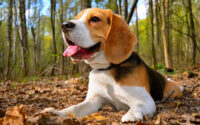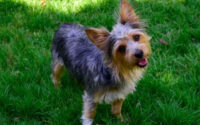Purebred bull terrier
The Bull Terrier, with its distinctive egg-shaped head and robust physique, stands out in the dog world as a breed like no other. Known for their spunky and affectionate nature, these purebred canines are not just companions but also a symbol of strength and tenacity. This article delves into the intricate tapestry that makes up the Bull Terrier breed, exploring their storied history, unique personality traits, and the responsibilities that come with owning such a distinctive dog.
Understanding the Bull Terrier Breed
Table of Contents

The Bull Terrier is a breed that is easily recognizable due to its unique physical attributes. It possesses a strong, muscular build and a distinguishing feature—an egg-shaped head with small, triangular eyes that give it an intense yet keen gaze. This breed comes in two size variations: the standard Bull Terrier and the smaller Miniature Bull Terrier. Despite the difference in size, both share similar characteristics and are known for their white coats, though colored varieties do exist.
Bull Terriers are not just known for their looks but also for their dynamic and robust nature. They are energetic and often require a significant amount of daily exercise to maintain their physical and mental well-being. Besides their athletic prowess, these dogs have a dense, short coat that is relatively easy to maintain, requiring only regular brushing to keep it shiny and healthy.
The breed’s temperament is as distinctive as its appearance. Bull Terriers are known for being friendly, playful, and sometimes stubborn. They are fiercely loyal to their families and can be very affectionate. However, this loyalty comes with a strong protective instinct that requires careful management to ensure it doesn’t develop into aggression.
Bull Terriers are not ideal for first-time dog owners. They need someone who understands canine behaviors and can provide firm, consistent training. The breed responds well to positive reinforcement techniques, and with the right training, Bull Terriers can excel in various canine sports and activities.
Understanding the breed also includes acknowledging its need for companionship. Bull Terriers thrive on human interaction and can suffer from separation anxiety if left alone for prolonged periods. Potential owners must be prepared to invest time and energy into their care and training to truly appreciate the joys of living with a Bull Terrier.
Exploring the Bull Terrier’s History

The Bull Terrier’s roots trace back to the early 19th century in England. The breed was originally developed for the now-outlawed sports of bull-baiting and later dog fighting, which required a powerful and tenacious animal. The breed was created by crossing Bulldogs with the now-extinct White English Terrier and later with the Dalmatian, which contributed to the Bull Terrier’s distinct appearance and coloring.
With the banning of blood sports, the breed’s purpose shifted from fighting to companionship. In the late 1800s, breeders began to focus on temperamental and physical refinement, leading to the Bull Terrier we know today—a dog that was both a gentleman’s companion and a capable show dog.
One notable figure in the breed’s development was James Hinks, who played a pivotal role in shaping the Bull Terrier. Hinks aimed to create a more elegant dog that was white-coated and had a more refined head shape. His efforts resulted in the “White Cavalier,” which became immensely popular and laid the foundation for the modern Bull Terrier.
Bull Terriers gained popularity in the United States in the early 20th century. Their affable nature and striking looks made them favorites among dog enthusiasts. The breed was recognized by the American Kennel Club (AKC) in 1885.
The breed’s popularity was further cemented by the iconic Budweiser commercials featuring a Bull Terrier named Spuds MacKenzie in the 1980s. Bull Terriers have also made their mark in popular culture, appearing in movies, television, and as cherished mascots.
Today, the Bull Terrier continues to be a beloved breed worldwide, valued for both its companionship and show qualities. Its story is a testament to how selective breeding and changing societal views can shape a breed’s purpose and place in the world.
Purebred Bull Terriers: Health Matters

When considering a purebred Bull Terrier, prospective owners should be aware of the breed-specific health issues that may arise. Being well-informed can help in ensuring a long, healthy life for these distinctive dogs. Key health concerns for Bull Terriers include:
- Hereditary Nephritis: A potentially fatal kidney disease that can be screened for through DNA testing.
- Deafness: Particularly prevalent in white Bull Terriers, this condition can be detected early through a BAER (Brainstem Auditory Evoked Response) test.
- Heart Conditions: Including aortic stenosis and mitral valve disease, which can affect Bull Terriers and should be monitored by a veterinarian.
- Skin Allergies: Bull Terriers can be prone to skin problems, often requiring dietary management and medical treatment.
- Luxating Patella: A condition where the kneecap dislocates, which can lead to lameness and may require surgical intervention.
- Behavioral Issues: Such as obsessive-compulsive disorders, which can manifest in tail chasing or self-mutilation if not managed properly.
Routine veterinary care is essential for Bull Terriers, as with any breed. Regular check-ups, vaccinations, and parasite control are fundamental parts of responsible dog ownership. Additionally, feeding a balanced diet, maintaining an ideal weight, and providing sufficient exercise can prevent many health issues associated with the breed.
Prospective Bull Terrier owners should seek breeders who perform health screenings on their breeding stock to ensure the healthiest possible puppies. Being proactive and educated about the breed’s health can lead to a more fulfilling companionship with a Bull Terrier.
Training Tips for Bull Terrier Owners

Training a Bull Terrier requires patience, consistency, and an understanding of the breed’s quirks. Here are some tips for Bull Terrier owners to ensure successful training sessions:
- Start Early: Begin training and socialization as early as possible. Puppies are more adaptable and open to learning new behaviors and accepting new experiences.
- Positive Reinforcement: Use rewards such as treats, praise, and play to encourage desired behaviors. Bull Terriers respond well to positive reinforcement and are more likely to repeat actions that result in positive outcomes.
- Consistency is Key: Maintain consistent rules and routines. This helps the dog understand expectations and reduces confusion.
- Short Training Sessions: Keep training sessions short and engaging. Bull Terriers can become bored with repetition, so make sure to keep them interested and focused.
- Exercise: Adequate physical exercise is vital. A well-exercised Bull Terrier is more receptive to training as it helps to burn off excess energy.
- Professional Help: If necessary, don’t hesitate to seek professional training help. A qualified dog trainer with experience in the breed can provide valuable guidance.
Remember, Bull Terriers can be stubborn at times, which means that training might require more patience than with other breeds. However, with the right approach, Bull Terriers can become well-behaved and disciplined companions.
The Bull Terrier’s Unique Personality

The Bull Terrier is not just another pretty face in the canine crowd; it’s a breed with a personality as distinctive as its physical appearance. Owners are often drawn to Bull Terriers for their energetic and comedic nature. The breed is known for its playful antics and seems to possess an innate ability to make people laugh.
Bull Terriers are also characterized by their affectionate disposition. They form strong bonds with their families and are known to be particularly fond of children. However, due to their boisterous nature, interactions with very young children should always be supervised.
In addition to their lovable traits, Bull Terriers have a strong-willed and independent streak. This can sometimes be mistaken for aggression, but with proper training and socialization, it can be channeled into positive behaviors. Bull Terriers are intelligent and capable of learning a wide range of commands and tricks.
The breed’s protective instinct can be both a positive and a negative trait. On one hand, it makes them excellent watchdogs, but on the other, it requires vigilant training to ensure that it does not lead to territorial or aggressive behavior towards strangers or other animals.
Bull Terriers are also known for their confidence. They rarely shy away from a challenge and can sometimes get themselves into trouble if not properly supervised. This is why it’s important for Bull Terrier owners to provide a safe, secure environment for their pets.
Overall, the unique personality of the Bull Terrier is a complex blend of playfulness, affection, loyalty, and independence. It’s this combination that makes them such captivating companions for the right owner.
Finding a Reputable Bull Terrier Breeder

For those interested in owning a purebred Bull Terrier, finding a reputable breeder is crucial. A good breeder not only ensures the health and well-being of their puppies but also works to maintain the breed standard. Here are some guidelines to help you find a responsible Bull Terrier breeder:
- Health Testing: A reputable breeder will perform and provide proof of genetic testing and health clearances for both parents and the puppies.
- Knowledgeable: They should be knowledgeable about the breed and willing to answer all your questions regarding Bull Terrier health, temperament, and care.
- Facility Inspection: The breeder should allow you to visit and inspect the facility where the puppies are raised, to ensure they are kept in clean, comfortable conditions.
- References: A good breeder can provide references from previous buyers and veterinarians.
- After-Sale Support: They should offer support after you take your puppy home, including advice on care, training, and diet.
- Involved with the Breed: Look for breeders who are actively involved with Bull Terriers, whether in dog shows, breed clubs, or breed-specific activities.
Avoid breeders who seem



